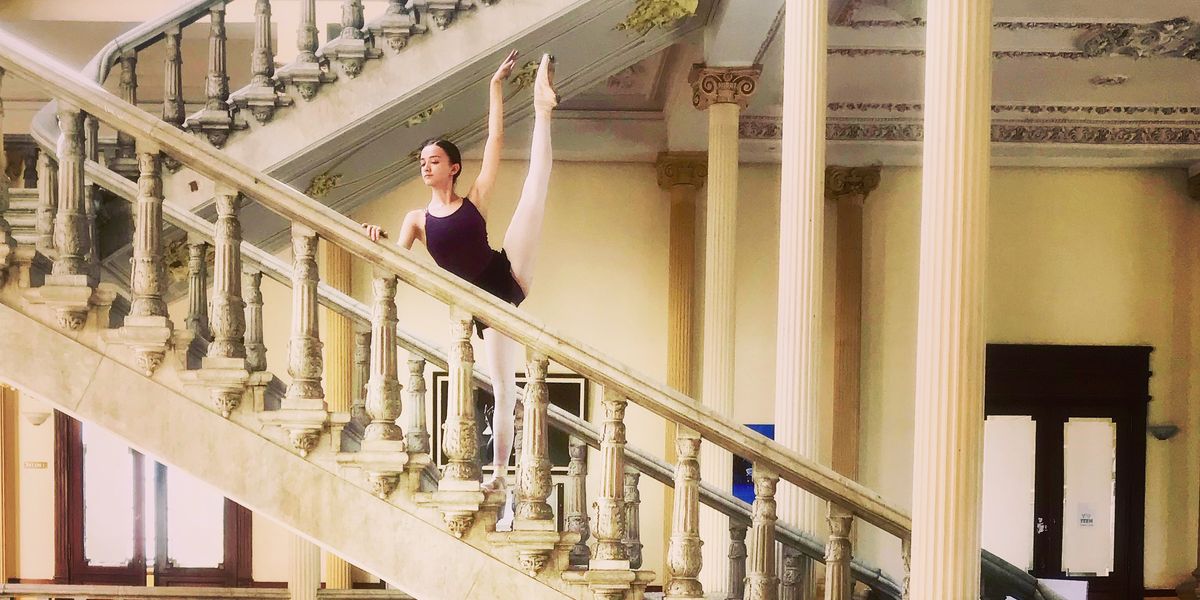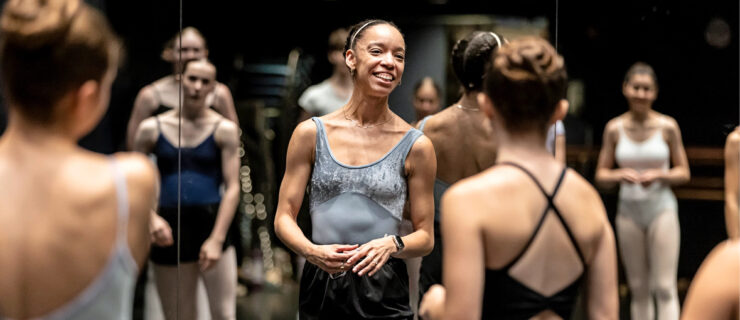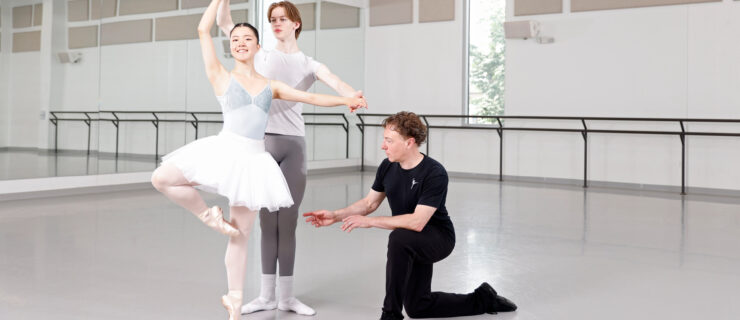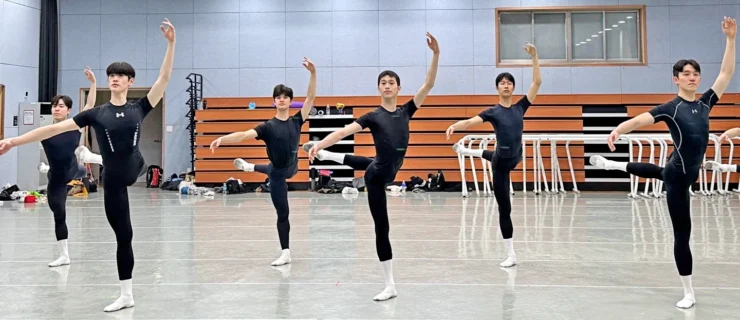What Is It Like to Train Abroad in Cuba? Two Young Dancers Weigh In.
If you’ve had an opportunity to see the Cuban National Ballet Company perform, or taken class with a Cuban-trained teacher, or observed a Cuban-trained dancer in classical, contemporary or character roles, you’ve probably wondered what it might be like to study or dance professionally in the island nation. The U.S. trade and travel embargo can seem like an obstacle, but under its provisions, travel to Cuba is permissible for pursuing an education or professional interests. Shortly after the 26th Havana International Ballet Festival, I spoke with two dancers—a student and a professional—whose experience studying and dancing in Cuba sheds some light on what it’s like.
Catherine Conley

Catherine Conley. Photo by Cheryl Mann, Courtesy Conley.
Catherine Conley is a corps de ballet dancer with the Cuban National Ballet who trained at the Ruth Page Center for the Arts in Chicago. After participating in a cultural exchange with the Fernando Alonso Cuban National Ballet School that was arranged by Ruth Page director Victor Alexander Ramirez, Conley was invited to train full-time at the Cuban academy in 2016. (She talked about her experience in the October/November 2017 issue of Pointe.) She was promoted into the company‘s corps de ballet a year later, where she is currently its only U.S.-born dancer.
What would you say to other U.S. ballet students who are thinking about doing what you did to prepare them for studying here?
Have an open mind. Cuba has so much to offer, and you really have to open yourself up to it. The language barrier shouldn’t be a reason not consider it. I arrived speaking no Spanish and found myself communicating easily within about a month.
What did you find in the school’s curriculum that surprised you?
I expected the training to be rigorous and based on classical Cuban technique, but I was surprised that the curriculum included other dance styles. We received instruction in Spanish dance, ballroom dances from different eras, and studied the different period styles. I learned how important this is for ballet, because you have to change your style based on the time period or location in which the ballet is based.
What about the atmosphere did you find different from the one at the Ruth Page Center?
The atmosphere was one of “all ballet all the time,” where everyone was headed toward a career in ballet, and had made that decision by age 10, upon entering the school. Ruth Page has produced many fine professional dancers, but for most the training is more centered on enrichment than a career path. In Cuba, there is a clear trajectory and a different energy because everyone has their eyes on the same target company.
Do you feel that you have sunken roots here over the past two years? What would make you consider auditioning for companies outside of Cuba?
I have really sunk roots here and become very close with so many friends. I have also been embraced by and made to feel part of their families. I am very happy being a member of such an outstanding ballet, and have been given great roles, so I’m dancing and learning a lot. It is, though, fairly difficult for a foreigner to stay in Cuba long term because of student/work visas. So hopefully that can be resolved successfully.
What was the most valuable lesson in your training and experience with the company that you would want to impart to others seeking a ballet career?
It is important in ballet, or in any career, to be adaptable. Ballet masters and choreographers want to work with people who learn quickly, are easy to work with and teach, and aren’t afraid of doing something they’ve never done before. They need dancers who go above and beyond, and who can step in on the day of a show, if need be. Technique and artistry are incredibly important, but they are nothing without the right attitude.
Sofia Castán Vargas

Sofia Castán Vargas at the Cuban national Ballet School. Photo by Leysis Quesada, Courtesy Vargas.
Sixteen-year-old Sofia Castán Vargas was born in San Diego and lives in Tijuana, Mexico. As dual citizen, she commuted daily for academics in San Diego. Meanwhile, she studied ballet at Escuela de Danza Gloria Campobello and then the Academia Marycarmen Profesionales en Danza in Tijuana, where she had Cuban teachers and trained in the Cuban style. At 13 she moved to Havana, where she is now a full-time student at the Fernando Alonso Cuban National Ballet School.
What brought you to Cuba?
When I was 11 years old, my parents took me to Havana over spring break for a two-week intensive course at the Cuban National Ballet School. By the end of the first day, I knew this is where I wanted to study and came to two more intensives. On my third trip to Cuba, I auditioned and was accepted as a full-time student. I started school and was living alone (in student housing) here at age 13.
Tell me about your training experience here.
It’s very demanding. There are many excellent teachers who are very demanding, too. The school provides an all-around training regimen; there’s not a day that I am not completely exhausted! But you can really see the difference and the benefits of working so hard, so that makes it all worth it.
What were the biggest adjustments?
There were a lot of adjustments my first year: Being away from home, getting used to taxis and buses for transportation, having to take care of laundry, food and managing my expenses. And although I speak Spanish fluently, it took me a while to pick up the Cuban accent! All of this at the age of 13 and not having anyone I could rely on for help was hard. But I think working through these challenges has helped me realize how much I really do love what I´m doing and is pushing me to keep working harder to accomplish my goal of becoming a professional ballerina.

Vargas in Coppélia. Photo by Leysis Quesada, Courtesy Vargas.
What is distinctive about the way the Cubans approach preparing for a role?
Cubans are very passionate and spend a lot of time studying and understanding their roles. They’ll search for a motive or reason for every step, for every movement related to the character. They rely heavily on the help of acting teachers, who provide dancers with support on interpretations.
Do you envision remaining here for a while or auditioning for companies in other countries?
My ultimate dream is to dance for an international company, maybe in the U.S. or in Europe. The Cuban National Ballet is a company that I admire very much and have a great appreciation for, so dancing for this company would also be a big honor.
For students from other countries considering coming to Cuba to study ballet, what would you say to them to prepare them for the experience?
I would say you will work harder and sacrifice more than you ever have, but you will also learn more. So if you’re really passionate about ballet, it will all be worth it!
What in particular about Cuba has made you look at not only ballet, but culture and society in a different light?
Being a U.S. citizen and having gone to school there (K – 7th grade) while living in Mexico for 13 years, and now in Cuba for over two years, I’ve learned that every culture is very different, but they are all beautiful in their own way. When I first came to Cuba, it was amazing to me that so many people would go to the theater to see ballet performances. There is such a genuine love for this art here. I wish people in the U.S. and Mexico would appreciate ballet as much as Cubans do.





